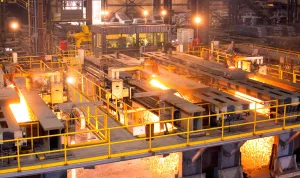How to Invest in Steel Futures: A Complete Guide for Savvy Traders

Investing in steel futures can offer significant opportunities for profit and diversification, particularly for those looking to capitalize on price fluctuations in the steel market. Steel futures are contracts that allow you to agree to buy or sell a specific amount of steel at a predetermined price and date. This guide will walk you through the essentials of investing in steel futures, including strategies, key considerations, and tips for navigating this dynamic market.
1. Understanding Steel Futures
a. What Are Steel Futures?
Steel futures are standardized contracts traded on futures exchanges that obligate the buyer to purchase, and the seller to deliver, a specific quantity of steel at a predetermined price on a set date in the future. These contracts are used by investors to hedge against price fluctuations or to speculate on price movements.
b. How Futures Work
- Contract Specifications: Each futures contract specifies the type, quantity, and delivery date of the steel. For example, contracts might specify a certain grade of steel and a delivery location.
- Margin Requirements: Futures trading involves margin accounts, where traders must deposit a percentage of the contract’s value to open and maintain a position. This margin acts as collateral for the contract.
2. Why Invest in Steel Futures?
a. Hedging Against Price Volatility
Steel producers and consumers use futures contracts to lock in prices and protect themselves against adverse price movements. By investing in steel futures, you can hedge against risks related to price volatility in the steel market.
b. Speculating on Market Movements
Traders and investors can speculate on the direction of steel prices to profit from market fluctuations. If you believe steel prices will rise, you can buy futures contracts, and if you expect a decline, you can sell contracts.
c. Diversifying Your Investment Portfolio
Steel futures offer a way to diversify your investment portfolio beyond traditional assets like stocks and bonds. Adding futures contracts can provide exposure to the commodities market and enhance portfolio diversification.
3. Key Considerations Before Investing
a. Market Research and Analysis
Understanding Market Drivers
- Supply and Demand: Analyze factors affecting steel supply and demand, including production levels, raw material costs, and global economic conditions.
- Economic Indicators: Monitor economic indicators such as industrial production, construction activity, and trade policies that impact steel prices.
b. Choosing a Futures Exchange
Major Exchanges
- Chicago Mercantile Exchange (CME): Offers steel futures contracts with standardized specifications.
- London Metal Exchange (LME): Provides futures contracts for various steel products.
c. Trading Strategies
Long and Short Positions
- Long Position: Buying futures contracts with the expectation that steel prices will rise. You profit if prices increase above the contract price.
- Short Position: Selling futures contracts with the expectation that prices will fall. You profit if prices decrease below the contract price.
d. Managing Risk
Using Stop-Loss Orders
- Stop-Loss Orders: Set predetermined price levels at which your position will automatically be sold to limit potential losses. This helps manage risk in volatile markets.
e. Costs and Fees
Understanding Trading Costs
- Transaction Fees: Include brokerage fees and exchange fees for executing futures trades.
- Margin Costs: Consider the costs associated with maintaining margin requirements.
4. How to Get Started with Steel Futures
a. Selecting a Futures Broker
Brokerage Services
- Brokerage Accounts: Choose a futures broker with a robust trading platform, competitive fees, and reliable customer service.
- Research and Tools: Ensure the broker provides research tools, market analysis, and educational resources to support your trading activities.
b. Opening a Margin Account
Margin Requirements
- Account Setup: Open a margin account with your chosen broker to trade steel futures. Be prepared to meet the initial and maintenance margin requirements.
c. Developing a Trading Plan
Strategic Planning
- Set Goals: Define your investment objectives, risk tolerance, and trading strategy.
- Monitor the Market: Continuously track market conditions, news, and economic data relevant to steel prices.
5. Staying Informed and Adapting
a. Market News and Analysis
Regular Updates
- Industry News: Stay updated on news related to the steel industry, including supply chain disruptions, regulatory changes, and economic trends.
- Technical Analysis: Use technical analysis tools to evaluate price charts and identify potential trading opportunities.
b. Adjusting Strategies
Adapting to Market Changes
- Reassess Strategies: Regularly review and adjust your trading strategies based on market developments and performance.
Conclusion
Investing in steel futures offers opportunities for both hedging and speculation, providing a way to capitalize on price movements in the steel market. By understanding contract specifications, market drivers, and trading strategies, you can effectively navigate the futures market and enhance your investment portfolio. Selecting the right broker, managing risk, and staying informed are essential steps to achieving success in steel futures trading.



